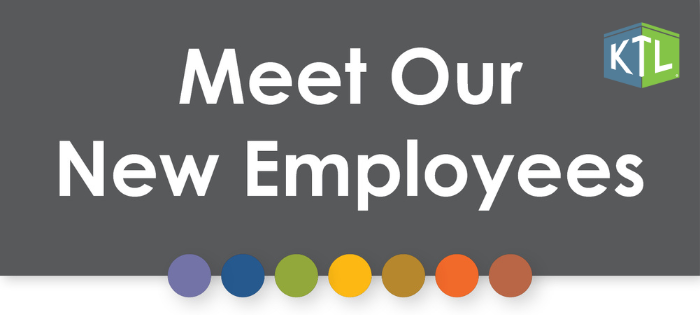
KTL News: New Food Safety Consultant
KTL is pleased to welcome the newest member of our food safety team!

Anna Sauls, Senior Consultant
Anna Sauls is a food safety and quality professional with more than ten years of experience. Prior to joining KTL, she served as an industry trainer for food, beverage, and natural products. Anna has in-depth knowledge of FDA food safety regulations and a strong ability to effectively communicate and train others on meeting food safety and quality requirements. Her areas of expertise include 21 CFR, food safety hazards, Hazard Analysis and Critical Control Points (HACCP), current Good Manufacturing Practices (cGMPs), Preventive Controls for Human Foods, food defense, environmental monitoring, sanitation, auditing, and documentation. Anna is based in Candler, NC. Read her full bio…
asauls@goktl.com | 252.339.7583

Comments: No Comments
Food Traceability: Final Rule
On November 7, 2022, the Food and Drug Administration (FDA) submitted the Food Safety Modernization Act (FSMA) Final Rule: Requirements for Additional Traceability Records for Certain Foods (Food Traceability Rule) to be published in the Federal Register. The Rule is scheduled to be published November 21, 2022, and will become effective 60 days after. The compliance date for all entities subject to the updated recordkeeping requirements is two years later—January 21, 2025.
Food traceability is the ability to track any food through all stages of the supply chain—production, processing, distribution—to ensure food safety and operational efficiency. Improving food traceability is a key objective for the FDA. The Administration has taken a number of actions over the past few years to put food traceability in the forefront, including establishing Tech-Enabled Traceability as a core element in the FDA’s New Era of Smarter Food Safety Blueprint and now, publishing the final Food Traceability Rule.
Summary of Key Elements
While FDA has had food traceability requirements, the new rule under FSMA Section 204(d) is intended to enhance traceability recordkeeping for certain identified foods beyond a limited “one-up, one-back” traceback approach. The objective of the rule is to “help the FDA rapidly and effectively identify recipients of those foods to prevent or mitigate foodborne illness outbreaks and address credible threats of serious adverse health consequences or death.”
Key elements of the proposed Food Traceability Rule include the following:
- Food Traceability List (FTL): The FTL designates categories of high-risk foods that require additional recordkeeping to protect public health. The Agency created a risk-ranking model to identify the following high-risk foods for inclusion on the FTL: cheeses, shell eggs, nut butter, cucumbers, fresh herbs, leafy greens, melons, peppers, sprouts, tomatoes, tropical tree fruits, fruits and vegetables (fresh cut), finfish, crustaceans, mollusks/bivalves, and ready-to-eat (RTE) deli salads. The rule establishes a process for FDA to update the FTL, as appropriate. Additions become effective one year after publication in the Federal Register; deletions would become effective immediately.
- Critical Tracking Events (CTEs) and Key Data Elements (KDEs): The rule requires tracking KDEs for five defined CTEs: growing, receiving, creating, transforming, and shipping. At each CTE, the responsible entity needs to record the traceability lot code and relevant KDEs specific to that activity. The traceability lot code is to be established by entities that originate, transform, or create food on the FTL. This identifier remains the same as the product moves through the supply chain unless a transformation of the food occurs. The objective is to create linkages throughout the supply chain to help the FDA address key points in the supply chain more quickly in the event of an outbreak.
- Traceability Program Records: Any entity that engages in production of a food on the FTL must create and maintain traceability program records, including a description of relevant reference records, list of foods on the FTL that are shipped, description of how traceability lot codes are assigned, and any other information needed to understand data. Records must be maintained as either original paper records, electronic records, or true copies. An electronic sortable spreadsheet must be provided to FDA within 24 hours during an outbreak, recall, or other threat to public health.
The final rule maintains several exemptions and partial exemptions included in the proposed rule. Some of these include excluding produce that is rarely consumed raw (RCR), certain farms and small originators, farms that sell directly to consumers, certain food produced and packaged on farms, small retail food establishments (RFEs), and others.
Meeting the Needs: Document Management
Over the next two years, those who manufacture, process, pack, or hold foods on the FTL will need to develop and implement the management systems required to fulfill the Food Traceability Rule’s recordkeeping requirements. And while these requirements only apply to foods on the FTL, FDA states that “they were designed to be suitable for FDA food products” and encourages the voluntary adoption of these practices industry-wide.
Having a good document/records management system is essential for maintaining the vast number of documents required by regulations and standards such as the Food Traceability Rule. Companies have been keeping records and documents in binders and file cabinets for years. While that system can work, many dynamic tools are available to alleviate some of these challenges and support organizational decision-making. A document management system can help create:
- Process and document standardization
- Central and secure storage, organization, and access to documents and records locally or remotely
- Improved document searchability and accessibility
- Enhanced workflows for approving and completing tasks involving documents
- Easy access to documents for audits and clear audit trail, particularly for remote audits
- Version control and history
- Reduced paperwork
- Higher quality data due to reduced human error
- Improved collaboration
- Improved security of sensitive documents
All of which lead to consistent, efficient, and reliable compliance performance which, in the case of food traceability, will help to:
- Create standardization and harmonization across industry approaches.
- Reduce response time in a foodborne illness outbreak and, subsequently, the number of people impacted.
- Limit the overall scope of recalls.
- Improve communication and create stronger linkages through greater transparency throughout the supply chain.
- Eventually create end-to-end traceability.

Comments: No Comments
BRCGS Issue 9: Focus on Culture and Core Competencies
First published in 1998, the BRCGS Global Food Safety Standard “provides a framework to manage product safety, integrity, legality, and quality, and the operational controls for these criteria in the food and food ingredient manufacturing, processing, and packing industry.” BRCGS was the first standard to be benchmarked by the Global Food Safety Initiative (GFSI) and has been adopted by over 22,000 sites in 130 countries.
Over the past 24 years, the Global Food Safety Standard has been updated regularly to reflect the latest trends in food safety and to encourage more widespread adoption. The latest version—Issue 9—was recently launched on August 1, 2022. According to the Standard, the focus for the most recent issue has been on the following:
- Encouraging understanding and further development of product safety culture.
- Ensuring global applicability, compatibility with the Codex General Principles of Food Hygiene, and benchmarking to the GFSI requirements.
- Expanding audit options to include the use of information and communication technology through a blended option.
- Updating the requirements associated with core product safety activities, such as internal audits, root cause analysis, preventive actions, and incident management.
- Providing greater clarity for sites completing animal primary conversion and producing animal feed.
Of important note, Issue 9 emphasizes two core themes: building core competencies and developing food safety culture.
Core Competencies
According to BRCGS, approximately 30% of nonconformances identified in food safety audits are related to what BRCGS calls “core competencies”. Core competencies are the basic elements and day-to-day activities that form the foundation of any food safety program. As audit results have demonstrated, many food businesses still aren’t getting the basic functions right when it comes to their daily work practices.
At its core, Issue 9 calls for more to be done to reduce nonconformances across the industry. The Standard believes the best way to do that is to improve and optimize the fundamentals (i.e., the core competencies). The requirements the Standard has specifically deemed “fundamental” include the following:
- Senior management commitment and continual improvement (1.1)
- Food safety plan – Hazard Analysis and Critical Control Points (HACCP) (2)
- Internal audits (3.4)
- Management of suppliers of raw materials and packaging (3.5.1)
- Corrective and preventive actions (3.7)
- Traceability (3.9)
- Layout, product flow, and segregation (4.3)
- Housekeeping and hygiene (4.11)
- Management of allergens (5.3)
- Control of operations (6.1)
- Labeling and pack control (6.2)
- Training: raw material handling, preparation, processing, packing, and storage areas (7.1)
Core competencies must not just be established, but they must also receive ongoing attention and improvements to conform with the Global Food Safety Standard. These core competencies are critical to creating a strong food safety culture—the second core theme of Issue 9.
Food Safety Culture
Food safety culture and its introduction into various certification schemes and regulations is a hot trend that continues to grow in importance. Artifacts of product safety culture have actually been included in the BRCGS standard since its inception in 1998, but food safety culture wasn’t added as a specific requirement until Issue 8. Issue 9 takes food safety culture to the next level with the requirement for organizations to put in place defined activities and behaviors—with defined timescales and measurements—to support the improvement of food safety and culture.
In Issue 9, food safety culture is now part of the fundamental section in 1.1 Management Commitment to ensure development and continuous improvement. In addition, sites must have a Food Safety Culture Plan that requires, at a minimum:
- Clear and open communication on product safety
- Training
- Feedback from employees
- Behavior changes required to maintain and improve product safety processes
- Performance measurement on product safety, authenticity, legality, and quality-related activities
Next Steps
Sites currently certified globally to the BRCGS Global Food Safety Standard will have a transition period of six months to prepare their food safety systems to be audited against Issue 9’s requirements. Certification audits will commence February 1, 2023. In addition to the announced audit program (with mandatory unannounced audit every three years) and the unannounced audit program, which both remain largely unchanged since Issue 8, Issue 9 introduces a blended announced audit option that comprises a remote audit focused primarily on documented systems and records, followed by an onsite audit to review production, storage, and other onsite areas.
The next six months affords companies the time to assess current BRCGS Food Safety program elements; identify improvements that are internally desirable and required by the new Issue 9; and implement those updates that will create a strong food safety culture, improve core competencies, and reduce nonconformances with the BRCGS Food Safety Standard.
This can be done through a series of phases to ensure adoption throughout the organization.
- Phase 1: BRCGS Food Safety Internal Assessment – Review existing BRCGS food programs, processes, and procedures; document management systems; and employee training tools and programs to identify those need areas in need of updates, development, and/or implementation to meet the requirements of Issue 9.
- Phase 2: BRCGS Food Program Updates – Based on the assessment, develop a plan for updating the BRCGS Food Safety certification program, including major activities, key milestones, and expected outcomes. This may include updating/developing BRCGS Food programs, processes, procedures, and training with missing Issue 9 requirements and incorporating new food safety culture requirements (i.e., Food Safety Culture Plan).
- Phase 3: Training – To ensure staff are prepared to implement and sustain the updated BRCGS Food Safety program, staff must be trained on applicable requirements; specific plans, procedures, and good manufacturing practices (GMPs) developed to achieve compliance; and the certification roadmap to prepare for future assessments.
Following this plan now will help companies ensure they maintain their BRCGS Food Safety certification when assessments begin under Issue 9 in February 2023.
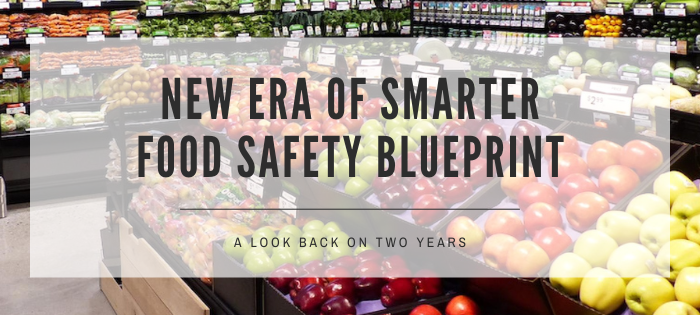
Comments: No Comments
New Era of Smarter Food Safety: Two Years of Progress
Two years ago—on July 13, 2020—the Food & Drug Administration (FDA) published the New Era of Smarter Food Safety Blueprint, providing the roadmap FDA will follow to further food safety modernization under the Food Safety Modernization Act (FSMA). According to FDA, “Smarter food safety is about more than just technology. It’s also about simpler, more effective, and modern approaches and processes. It’s about leadership, creativity, and culture.”
This has remained the Administration’s focus as it has pushed its New Era of Food Safety forward to meet the Blueprint’s goals to:
- Enhance traceability
- Improve predictive analytics
- Respond more rapidly to outbreaks
- Address new business models
- Reduce contamination of food
- Foster the development of stronger food safety cultures
Progress to Date
For the past two years, FDA has focused on initiatives to support the four core elements identified in the Blueprint. Progress-to-date has included the following:
Core Element #1: Tech-Enabled Traceability. FDA has taken several actions to use technology to create food traceability advancements and reduce foodborne illness:
- The proposed Food Traceability Rule was published on September 23, 2020, as required under FSMA Section 204(d), to enhance traceability recordkeeping for certain identified foods beyond a limited “one-up, one-back” traceback approach. The final rule must be submitted by November 7, 2022.
- Twelve winning teams were selected in FDA’s Low- or No-Cost Tech-Enabled Traceability Challenge, which encouraged development of traceability systems that are cost-effective for food operations of all size. The winning entities are now working with FDA to disseminate their ideas to stakeholders.
Core Element # 2: Smart Tools for Outbreak Response. The Blueprint seeks to strengthen the use of data for root cause analyses and predictive analytics to prevent future outbreaks. Advancements in this area have included the following:
- FDA conducted a pilot study designed to strengthen the ability to predict which shipments of imported seafood pose the greatest risk of violation. Results show that machine learning could increase the likelihood of identifying a shipment containing potentially contaminated products.
- FDA has increased the amount and quality of data through information sharing agreements with regulatory and public health partners, academic institutions, industry, and others. This includes domestic mutual reliance agreements signed with five states (i.e., California, Florida, Minnesota, Utah, and Wisconsin), which “provide opportunities for the FDA and state partners to lay a quality foundation for sharing information and working together on regulatory services and food protection that industry and consumers can trust.”
- In December 2021, FDA released its Foodborne Outbreak Response Improvement Plan, which sets the stage to “enhance the speed, effectiveness, coordination, and communication of foodborne outbreak investigations” through tech-enabled product traceback, root cause investigations, stronger analysis and dissemination of outbreak data, and operational improvements.
Core Element #3: New Business Models and Retail Food Modernization. As FDA has acknowledged, “The COVID-19 pandemic underscores the need for modern approaches as we respond to unique demands on our food system, from unprecedented imbalances in the marketplace, to changing consumer behaviors and a rise in e-commerce, to challenges to performing inspection and compliance work in FDA’s traditional manner.” Correspondingly, the Administration is considering how to address potential food safety vulnerabilities for foods ordered online and delivered directly to the consumer.
Core Element #4: Food Safety Culture. The improvements in food safety, foodborne illness, and outbreaks outlined above depend largely on food safety culture. Every action the FDA takes is intended to help create an atmosphere where organizations are aware of and help to prevent any process and/or operational issues and deviations that may impact the safety and/or quality of their food products. FDA also remains focused on consumer education regarding safe handling of food.
A Look Ahead
As FDA continues to push its New Era of Food Safety forward and new challenges surface, it is important to understand the current landscape, set priorities, and commit the appropriate resources to ensure long-term sustainability. Certainly, the COVID-19 pandemic has heightened a number of issues and unique demands on the food safety system.
As the Blueprint enters year three, FDA will continue to advance its core elements and goals. Companies that operate in the food industry should consider undertaking the following activities to align with FDA’s objectives:
- Implement a food safety compliance management system to help coordinate, organize, control, analyze, and visualize the information necessary to remain in compliance and operate efficiently.
- Conduct third-party assessments to provide an outside perspective of food safety systems and compliance/certification to identify gaps in programs that need development/updates.
- Explore technological advancements that allow for further digitization and promote more timely and accurate collection and management of important data.
- Gather/manage data and conduct root cause analysis, as needed, to identify underlying issues and ensure similar problems do not occur in the future.
- Build a strong food safety culture that focuses on changing from a reactionary to a preventive mindset that promotes safety and quality.
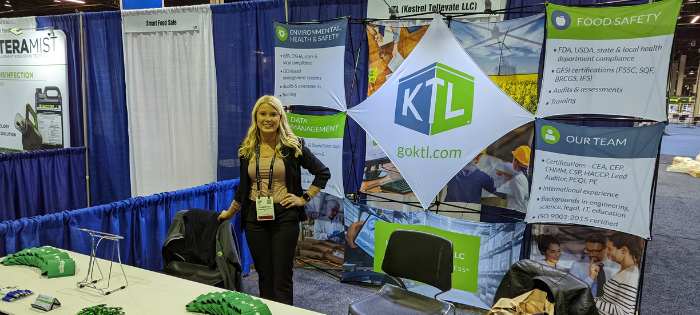
Food Safety Summit Recap: Key Takeaways
The Food Safety Summit brings together the food safety community to learn more about today’s most crucial elements of food safety—from regulatory concerns and current industry trends to ongoing challenges and the latest technology and solutions.
This year’s Summit, held earlier in May, proved once again to be an engaging and informative meeting for all in attendance. Throughout the Summit, KTL’s food safety experts observed several common themes and challenges that the food industry is facing — challenges that your business may be encountering today.
We sat down with KTL’s attendees—Roberto Bellavia, Kasia Branny, Samantha Edwards, April Greene, and Joe Tell—to get their key takeaways from the Summit.
What topics were covered throughout the Summit?
The agenda for this year’s Summit was packed. Just some of the topics covered included cybersecurity, internal audits, food waste, food safety culture, foodborne illness, food safety management systems (FSMS), data-driven analytics, tech-enabled traceability, food recalls, microbial challenge studies, supply chain management, and sanitation.
Food safety culture headlined the agenda as the keynote topic this year, and it is clear this is an area garnering much more attention and visibility across the food industry. The keynote address provided the Food and Drug Administration’s (FDA) views on the importance of developing and nurturing food safety culture in the food industry, the industry perspective on implementing successful food safety culture strategies, and the importance of food safety culture through the eyes of the Department of Justice (DOJ).
KTL participated in a panel on virtual tools for food safety assessments. Panelists discussed how organizations are using remote technology to perform food safety assessments, food inspections, product and facility approvals, and similar tasks that are usually performed in person and onsite. The group discussed the practical, procedural, legal, and technology considerations any organization needs to develop efficient and effective remote audit protocols and maximize their potential use of remote tools.
In addition, KTL had a large turnout for our Solutions Stage presentation, Food Safety Management System Case Study: Using Microsoft 365® to Improve Compliance. KTL discussed how having a simple, centralized FSMS to manage, track, communicate, and report compliance program information can enable staff to complete required tasks, improve compliance performance, and support operational decision-making. The big secret: most companies already have the software they need in-house. An industry case study demonstrated a cost-effective approach for building an FSMS using the Microsoft 365 platform with SharePoint®.
What are the biggest challenges companies in the food industry are currently facing?
Not surprisingly, one of the biggest challenges we heard time and again is related to staffing, from turnover in the quality department to being understaffed in production. On a related note, many also noted challenges in finding qualified—and available—auditors. Also not surprising, budget constraints and shortages in the supply chain remain challenges to navigate. It is increasingly difficult to get raw materials for operations and finding truckers to get materials to/from facilities is hampering production.
There remains a lot of focus on the application of new FDA requirements—like Foreign Supplier Verification Program (FSVP) and Food Defense and Intentional Adulteration—and finding good systems to manage all the related documents. While this is not a new rule, supplier approval/verification programs, vulnerability assessments, and written food defense plans will remain a key focus as a surge in food demand and lack of supply has created an environment ripe for food fraud. It is likely that FDA intentional adulteration inspections could also ramp up.
Finally, many companies are experiencing other regulatory bodies (beyond FDA and USDA) taking much more interest in food companies. The Environmental Protection Agency (EPA) and Occupational Safety and Health Administration (OSHA) have started to realize that they have been somewhat lax on inspecting these facilities. 2021 brought a significant uptick in EPA multi-media inspections, enforcement actions, and large penalties for violations, particularly related to anhydrous ammonia storage, risk management, and chemical accident prevention planning. Anhydrous ammonia is widely used as refrigerant in food facilities, including meat, poultry, and fish processing facilities; dairy and ice cream plants; wineries and breweries; fruit juice, vegetable juice, and soft drink processing facilities; cold storage warehouses; other food processing facilities; and seafood processing facilities aboard ships. Not only are companies trying to make do with fewer staff, but responsibilities are growing to include these environmental, health, and safety (EHS) regulatory compliance concerns, as well.
Are there any *new* food safety trends you heard about that companies should have on their radar?
Food safety culture. Food safety culture and its introduction into various certification schemes and regulations is a hot trend that will only grow in importance. Food safety culture is a core element of the FDA’s New Era of Smarter Food Safety. It is also a key component of the GFSI Benchmarking Requirements Version 2020 and, subsequently, is being integrated as a requirement into many of the benchmarked food safety certification standards. Best-in-class food safety cultures have robust systems in place to ensure consistent commitment, communication, procedures, training, performance measurement, and trust.
Cybersecurity. Cybersecurity is moving to the forefront for many. A new law was adopted that requires companies in listed industry sectors, including the food sector, to report to the Department of Homeland Security (DHS) within 72 hours of a cyberattack and within 24 hours if they paid ransom. Implementing regulations will clarify which companies are specifically subject to this reporting. Interestingly, Microsoft SharePoint was mentioned during the Summit as one of the safest technologies for storing and managing information compared to other food safety software from a cybersecurity perspective.
Rapid laboratory testing. Another interesting and very current discussion was about the new micronutrient and chemical analyses that have been developed to quickly test baby formula to help combat the baby formula shortage. There is a lot of opportunity and more “affordable” technology available to set up internal rapid laboratory testing to conduct product and environmental testing.
Data analytics. There is also a big push for usable data. Companies are starting to realize they need to have data they can use in a meaningful way to improve their systems. A well-designed and well-executed food safety program—with data trend analysis—provides an important tool for ensuring food safety. The goal should be to effectively capture and analyze audit data and then use that information to improve food safety and quality, achieve certification requirements, and enhance overall business performance.
Sustainable food management. The regulatory community has identified a real need for addressing food waste and the lack of circularity in the food industry. Wasted food makes up the largest percentage—over 20%—of any one material sent to landfills and incinerators each year in the U.S. The EPA, USDA, and FDA have already joined forces to address the magnitude of wasted food impacts across the U.S. through the U.S. Food Loss and Waste 2030 Champion program. Efforts to promote sustainable food management have begun extending to the state level and will continue.
Supplier expectations. Finally, companies (and customers) are setting higher expectations for the supplier and vendor companies they work with. As a result, more companies are pursuing certifications in areas they may not have previously considered to meet these customer expectations or, sometimes, to work globally. This can include anything from getting certified to various ISO management system standards (e.g., quality (ISO 9001), environment (ISO 14001), cybersecurity (ISO 27001), etc.), or participating in sustainability and corporate social responsibility reporting (e.g., Global Reporting Initiative (GRI), Carbon Disclosure Project (CDP), etc.).
What should companies in the food industry be doing now to plan for the future?
The shortage of workers—and resources, in general—is likely to continue for the foreseeable future. The days where it is typical to see someone at the same company for 25+ years are coming to a close! Managing the complexities of a FSMS and food safety program is challenging, even when fully staffed. Every regulatory agency and voluntary certification standard calls for companies to fulfill compliance requirements; supply chain and internal requirements create further complications and confusion.
One of the best things food companies can do to manage this challenge and plan for the future is to invest in going digital. Compliance efficiency and tracking tools are becoming essential to allow companies to do more with fewer resources. An integrated compliance management system brings various tools together to create one system that effectively manages compliance requirements, enables staff to carry out daily tasks and manage operations, and supports operational decision making by tracking and trending data that is collected daily by the team charged with implementation.

Benefits of an Integrated Management System
According to the International Organization for Standardization (ISO), are currently more than 80 Management System Standards (MSS)—80 different standards designed to help companies improve their performance across a diverse range of areas and sectors.
Most companies these days have some sort of management system, whether formal (e.g., ISO, Global Food Safety Initiative (GFSI)-benchmarked standard, industry-specific) or informal. And, because most companies have various aspects and functions to their operations, many actually may have more than one system to organize processes and business objectives.
While management systems by ISO’s definition are designed to “help organizations improve their performance by specifying repeatable steps that organizations consciously implement to achieve their goals and objectives,” having multiple systems to manage often overlapping requirements (i.e., regulatory, certification, supply chain, internal) can create redundancies, inefficiencies, extra work, and overall confusion.
Integrated Management Systems: The Basics
A management system is the organizing framework that enables companies to achieve and sustain their operational and business objectives through a process of continuous improvement (i.e., Plan-Do-Check-Act). It is designed to identify and manage risks through an organized set of policies, procedures, practices, and resources that guide the enterprise and its activities to maximize business value.
A management system should be a means to better align operational quality, safety, environment, food safety, security, energy, etc. with the business. An integrated management system does just this. It aligns an organization’s various systems and processes into one complete framework, enabling the organization to work as a single unit to implement specific best practices organization-wide, fulfill the requirements of multiple standards, and meet a unified set of business objectives.
Integration Business Benefits
Ultimately, the various MSS have many common points—and all work towards the goal of making the organization more effective and efficient. Developing an integrated management system allows organizations to align the standards, find common management system components (e.g., terminology, policies, objectives, processes, resources), and add measurable and recognizable business value, including the following:
Greater consistency. An integrated approach creates greater consistency across business facets when it comes to terminology, processes, procedures, expectations, etc., and, in turn, greatly improved focus on a common set of business objectives. With an integrated system, organizations can ensure that processes, methods, and practices are in place, documented, and consistently applied across the entire organization. A common documented framework such as this helps alleviate duplication of efforts, allows for a more complete view of the functional needs of the entire organization, and reduces variability in performance.
Optimized processes and resources. Integrated systems allow companies to optimize processes and resources and, subsequently, reduce the time it takes to do certain activities. Integrated management systems help organizations to maintain requirements and associated documents concurrently—particularly through use of an information system—streamlining the process and allowing the organization to focus on improvements rather than maintaining multiple systems. A common system enables better use of resources and better collaboration and communication across the company.
More strategic approach. Organizations can take a more strategic approach with an integrated management system because it focuses on managing all aspects of the business, not just one area. It provides clear methods and processes to identify and prioritize risks, set and monitor goals, communicate risks to employees and management, and allocate appropriate resources to mitigate them. It also establishes a common language among managers, executives, and employees, which enables better goal setting, priority ranking, and allocation of resources. As a bonus, integrated systems also make it much easier to implement an organization-wide information system capable of tracking and reporting on common activities and key performance metrics.
Forward-thinking. More and more organizations are expecting more from the companies they work with—and that includes management systems. The push for best practices over just regulatory compliance is a growing trend. Reliable and effective regulatory compliance is commonly an outcome of consistent implementation of a management system. Beyond that, an integrated management system allows organizations to more effectively manage those risks (i.e., compliance, financial, legal liability, brand reputation) that can significantly impact the entire supply chain.
Help from the Standards
Standards organizations such has ISO are making it as easy as possible to implement an integrated management system—whether formal or informal—because, plain and simple, it just makes business sense. For example, ISO has adopted a Harmonized Structure (formerly known as High-Level Structure) to make sure every ISO MSS is structured in the same way with ten universal sections. The ISO MSS also use Annex SL, which dictates how the MSS should be written and, again, is consistent across the various MSS. These efforts simplify use, streamline protocol, and encourage standardization across the ISO MSS.
Beyond that, ISO has published a Guide to Integrating Management System Standards (revised in 2018) to help organizations implement integrated management system design—ISO or not. According to Michael McLean, Convenor or the ISO working group that developed the handbook, “Many organizations benefit from multiple management systems to help them ensure their systems and processes are in line with their objectives and help them maintain their business model through ever-changing environments. This handbook provides a practical guide for organizations to effectively align their management systems with their strategies, plans, and operations.”
Taking the Next Steps
If you are operating with multiple management systems—or even if you have no management system at all—there are some basic steps to creating an integrated management system:
- Invest the time to understand the current scope of operations, functional departments, compliance requirements, governance structure, etc. across the entire organization as a whole, not just siloed departments.
- Conduct a gap assessment to evaluate the current (“as-is”) condition of any formal or informal management system(s) against the desired (“to-be”) condition (e.g., ISO, GFSI, industry-specific).
- Create a development and implementation plan outlining tasks and resources required to close any identified gaps and achieve those objectives.
- Determine key components of the integrated management system required to achieve business objectives.
- Identify common elements to be standardized and incorporated into an integrated system (e.g., policies, procedures, processes, metrics, training).
- Determine what information technology can support and streamline an integrated management system.
- Provide relevant training to all interested parties to truly operationalize the management system across the organization.
Whether formal or informal, integrated management systems provide organizations—both big and small, in any industry—a pillar for sustainable growth. By developing and implementing an aligned management system, organizations can achieve more consistent, reliable, and efficient performance across many areas, while adding measurable and recognizable business value.
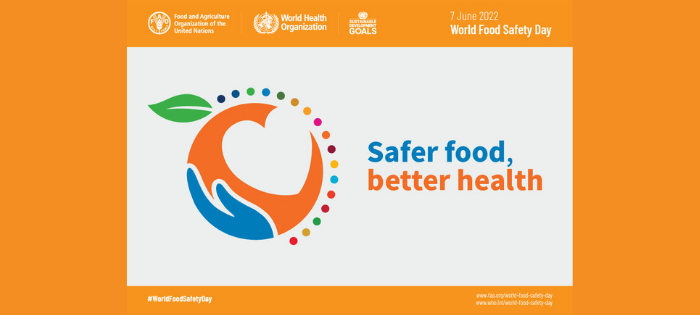
Comments: No Comments
World Food Safety Day: Safer Food, Better Health
On June 7, countries around the globe will celebrate World Food Safety Day, focusing this year on “Safer food, better health” as the theme. Established by the United Nations General Assembly in 2018, World Food Safety Day is an annual observation intended to mobilize action to prevent, detect, and manage foodborne risks and improve human health. The World Health Organization (WHO) and the Food and Agriculture Organization (FAO) of the United Nations jointly facilitate the observance of World Food Safety Day.
According to WHO, foodborne diseases affect 1 in 10 people worldwide each year. Safe food is a key contributor to reducing these foodborne illnesses and other poor health conditions, including impaired development, micronutrient deficiencies, noncommunicable and communicable diseases, and mental illnesses. Only when food is safe can we fully benefit from its nutritional value.
Everyone has a role to play in food safety—whether we grow, process, transport, store, sell, buy, prepare, or serve food. The way we build food systems and how we organize food supply chains can help achieve safer food for better health.
WHO is calling on everyone to join in World Food Safety Day to ensure safe food for all. Check out the Guide to World Food Safety Day to learn more about how various stakeholders can promote safer food and better health on World Food Safety Day this June 7 and every day.

Comments: No Comments
Doing Your Due Diligence: Food M&As
Any mergers & acquisitions (M&A) transaction, no matter the size or structure, can have a significant impact on the acquiring company—and food safety is a critical factor. As KTL reported in our Food Safety: Top Trends to Watch in 2022 article early this year, we are seeing more and more private equity firms investing in food companies and, subsequently, in evaluating their food safety infrastructure to determine the potential risk and overall value of the acquisition.
An assessment of the operations, production processes, equipment conditions, food safety management, quality, regulatory compliance, and all related documentation needs to be completed as part of any food-related acquisition. Prior to any acquisition, it is important to determine:
- Condition of operations (i.e., personnel, equipment, processes, facility) necessary to effectively meet existing performance standards.
- Level of food safety compliance to regulatory requirements and applicable voluntary industry certifications.
- Any potential high-level risks that would impact the transaction.
What to Expect
A food safety and quality assurance (FSQA) due diligence assessment should focus on a review of food safety and management practices, regulatory compliance, and overall level of implementation of FSQA processes to identify potential impacts to a planned investment. In general, it involves reviewing FSQA processes and procedures compared best practices in the industry, including:
- Compliance with Food and Drug Administration (FDA), U.S. Department of Agriculture (USDA), and other state and local regulations, including environmental, health, and safety (EHS).
- Programs and practices to manage Global Food Safety Initiative (GFSI) certifications (i.e., SQF, FSSC 22000, BRCGS, IFS), if applicable.
- Condition of operations (i.e., personnel, equipment, processes) necessary to effectively meet identified performance standards.
- Procedures and ability to ensure food safety during and after the transaction and any potential planned construction/moves.
- Capacity to appropriately and efficiently respond to customer complaints and the implementation of related corrective actions.
- Ability to effectively manage risks associated with the supply chain.
Due Diligence Approach
A typical FSQA due diligence assessment will include the following activities:
Review of documentation. All documents (e.g., policies, plans, standard operating procedures, forms, monitoring records, etc.) must be reviewed to identify potential gaps with applicable requirements and high-level FSQA risks. If construction and/or moving to a new facility is part of the acquisition, production plans, designs, and transition processes and plans for the new facility must also be reviewed to assess the level of effort and costs associated with getting the new plant operational.
Facility and programs implementation evaluation. An onsite assessment allows for facility tours, interviews with key staff, and “boots-on-the-ground” review of:
- Program elements for level of development, compliance with applicable regulatory requirements, implementation integrity, organizational resources, and management support and commitment.
- Operational processes and conditions related to the handling, storage, production, and distribution of products.
- Key building, equipment, process, and controls components, condition, and functionality as they relate to potential food safety or EHS risks.
- Disclosure and verification regarding the handling of ingredients, labeling, and packaging.
- Food safety and EHS regulatory compliance history and potential risks (e.g., recall programs and new FDA regulations implementation).
Written report. In most cases, the final deliverable will be a written report documenting assessment activities and results, including operational conditions, major FSQA risks, and review of facility plans. The written report should include actionable items that will allow the investor to make informed decisions regarding the acquisition, as well as potential future remediation and/or improvements to existing programs. Typical reports should include:
- Results of documents and records reviews, with trends analysis
- Identification of positive practices
- Regulatory compliance concerns and performance history
- Food safety and EHS risks
- Opinion on priority, transition, and feasibility of production startup timeline considering food safety requirements
- Recommendations for improvement
Smooth Transition
Undertaking adequate due diligence in any M&A activity is vital. It can lead to the discovery of regulatory inconsistencies that may lessen the value of an entire product line or business—and opportunities to make improvements. It can provide better insights into the risks and potential benefits of a transaction. And, ultimately, thorough due diligence can help ensure a smoother, more effective, and sustainable business integration.
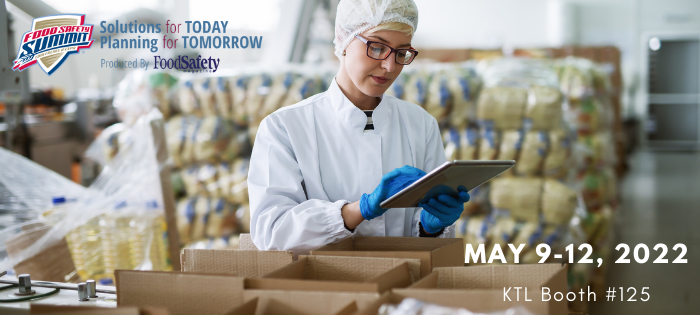
Visit KTL at the 2022 Food Safety Summit
As one of the premier events in the food industry, the Food Safety Summit provides a comprehensive conference and expo for attendees to learn from subject matter experts, exchange ideas, and find solutions to current industry challenges. The Summit is back in person this year, and KTL is excited to be there live!
- When: May 9-12, 2022
- Where: Donald Stephens Convention Center, Rosemont, Illinois
- Who: Retailers, food processors, distributors, food manufacturers, growers, foodservice, testing laboratories, importing/exporting, law firms, and other food safety professionals
- Find KTL: Stop by our booth (#125) in the exhibit hall!
KTL Solutions Stage Presentation
Be sure to also update your agenda to attend KTL’s Solutions Stage presentation on Thursday, May 12 at 1:30 pm. KTL Principal Joe Tell and Partner and Senior Consultant Roberto Bellavia will be highlighting the following case study:
Food Safety Management System Case Study: Using Microsoft 365® to Improve Compliance
Food and beverage companies and their suppliers are subject to a wide range of complex regulatory and certification requirements, often with limited resources to maintain and demonstrate compliance. Finding effective information management tools is critical. Having a simple, centralized FSMS to manage, track, communicate, and report compliance program information can enable staff to complete required tasks, improve compliance performance, and support operational decision-making. The big secret: most companies already have the software they need in-house. KTL will present an industry case study demonstrating a cost-effective approach for building an FSMS using your existing Microsoft 365® platform with SharePoint®.
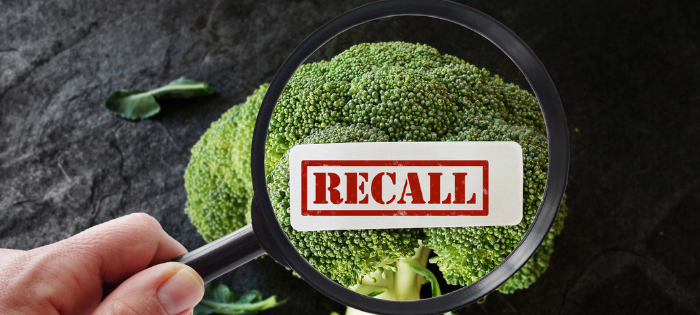
Comments: No Comments
FDA Issues Guidance for Voluntary Recalls
Foodborne illnesses impact millions of Americans every year—ranging from mild cases to hospitalizations to death. Reducing foodborne illness is a focus for the U.S. Food and Drug Administration (FDA), as reflected in several recent actions, including the proposed Food Traceability Rule (published on September 23, 2020) and the 2021 Foodborne Outbreak Response Improvement Plan (FORIP).
FDA recently took another step toward reducing the public’s exposure to the risks of foodborne illness on March 3, 2022, issuing its final guidance for voluntary recalls: Initiation of Voluntary Recalls Under 21 CFR Part 7, Subpart C.
About Voluntary Recalls
A voluntary recall involves actions taken by a company to correct or remove a violative product from the market, either on its own initiative or in response to a recommendation from the FDA. FDA Associate Commissioner of Regulatory Affairs Judith McMeekin, Pharm. D., emphasizes that “voluntary recalls continue to be the fastest, most effective way for a company to correct or remove violative and potentially harmful products from the market to help keep consumers safe.”
FDA’s new guidance outlines the steps companies should take before a recall is mandated, including developing policies and procedures, establishing training, maintaining records, and initiating communications.
BEFORE: Preparation Guidance
FDA’s guidance applies to any products that fall under the agency’s jurisdiction, including any food, drug, or device intended for human or animal use. The guidance breaks down the agency’s recommendations for activities companies (including manufacturers and distributors) should take in advance of a potential recall to be “recall ready.” These include the following:
- Establish a recall communications plan to address communications with employees, FDA, supply chain, direct accounts, and the public, as necessary. Identify key contacts and develop draft templates that can be easily customized and distributed when needed.
- Identify and train appropriate personnel (and alternates) on recall-related responsibilities. The recall team should have a thorough understanding of recall procedures and their respective roles in carrying out a recall plan. Regular training, including mock recalls, help ensure competency.
- Identify any reporting requirements for distributed products, if required by FDA. This might include a report to the Reportable Food Registry, an adverse event report for a dietary supplement, or a report to FDA upon product correction or removal.
- Establish and implement product coding to ensure traceability throughout production and distribution. This will enable more effective lot identification to accurately define and limit the recall scope.
- Maintain distribution records to allow for easier and faster identification of products to be recalled. Distribution records should include contact information for all direct accounts that received the product.
- Establish recall initiation procedures. Prepare, maintain, and document written procedures for initiating a recall to minimize delays and uncertainty when/if a voluntary recall becomes necessary. Procedures should be covered in training and should describe actions to carry out the following:
- Stop distribution, shipment, and/or sales of affected products.
- Outline a recall strategy that considers the scope/depth of the recall and associated risks.
- Notify direct accounts throughout the distribution chain and communicate instructions for appropriate disposition of product.
- Notify the public, when appropriate, if a product presents a health hazard.
DURING: Identifying and Initiating a Potential Recall
Identifying a potential problem is the first step in initiating a potential recall. It is vital that companies ensure timely identification and response to product problems that might lead to a recall. FDA suggests that the following indicators may suggest a potential concern:
- Internal reports of product specification deviation
- Out-of-specification testing results
- Consumer complaints
- Inspectional observations or laboratory results
- Reports of adverse events (e.g., illness, injury, death)
It is then the company’s responsibility to investigate the potential problem to determine 1.) whether a deviation has occurred, and 2.) whether the safety, effectiveness, purity, or potency of distributed products has been affected. A voluntary recall should not be delayed pending results of this investigation. Rather, companies should follow established procedures (see above) to decide whether to initiate a recall, determine the appropriate scope/depth of the recall, and resolve whether to discontinue production or distribution of impacted product(s).
To initiate a voluntary recall, companies should:
- Notify the FDA immediately if the company believes the product to be violative.
- Promptly issue recall communications to affected direct accounts and to the general public, if appropriate.
- Follow the procedures established in the company’s recall plan to implement the recall in accordance with 21 CFR 7.46.
- Provide instructions to the distribution chain regarding disposition of the product.
AFTER: Working with FDA
The FDA is committed to working with companies to help facilitate prompt response (i.e., removal or correction) to violative product that enters the marketplace. The agency has designated recall coordinators organized by product type located throughout the country who can work with company recall teams to develop strategies, review communications, monitor disposition of the product, coordinate with other regulatory bodies, etc.
The FDA may request a company initiate a recall under 21 CFR 7.45 after conducting discussions with the firm if the product presents a risk of illness, injury, or gross consumer deception; the firm has not initiated a voluntary recall; or agency action is required to protect public health.
Reducing Risks
The food industry and supply chains continue to change and evolve at an accelerated pace. That introduces new risks and challenges, including foodborne illness outbreaks. FDA’s most recent guidance is intended to help companies proactively address these risks—reducing response time in a foodborne illness outbreak and, subsequently, the number of people impacted.
